“I always ate wholesome meals cooked at home,” recalls Navya Goenka, 17. “So when I had appendicitis in Class 7, I was completely baffled. I started questioning what we were putting into our bodies.”
That moment of personal health scare planted a seed that grew into something much bigger than Navya could have imagined. A couple of years later, alongside her classmates Aayush Anand, Gaurvica Gupta, and Simayah Jhingran, she set out on a journey to utilise technology to solve a pressing problem faced by many Indian farmers.
Together, at Shiv Nadar School in Gurugram, under the mentorship of their computer science teacher, Mr Nimesh, the four students formed Team Agroventure. They were determined to develop a practical solution through their capstone project — a research-based initiative that all students at Shiv Nadar School are required to undertake in Class 10 to solve a real-world problem using inquiry and innovation.
Cracking the code of Indian soil
The name ‘Agroventure’ captures their mission — a venture into agriculture combining innovation and intent.
Their project, officially titled ‘Agroventure: Soil Analysis & Agrochemical Optimisation IoT Device’, centres around Mati Rakshak (meaning ‘Protector of Soil’) — a sleek, handheld tool that analyses soil nutrients in real time.
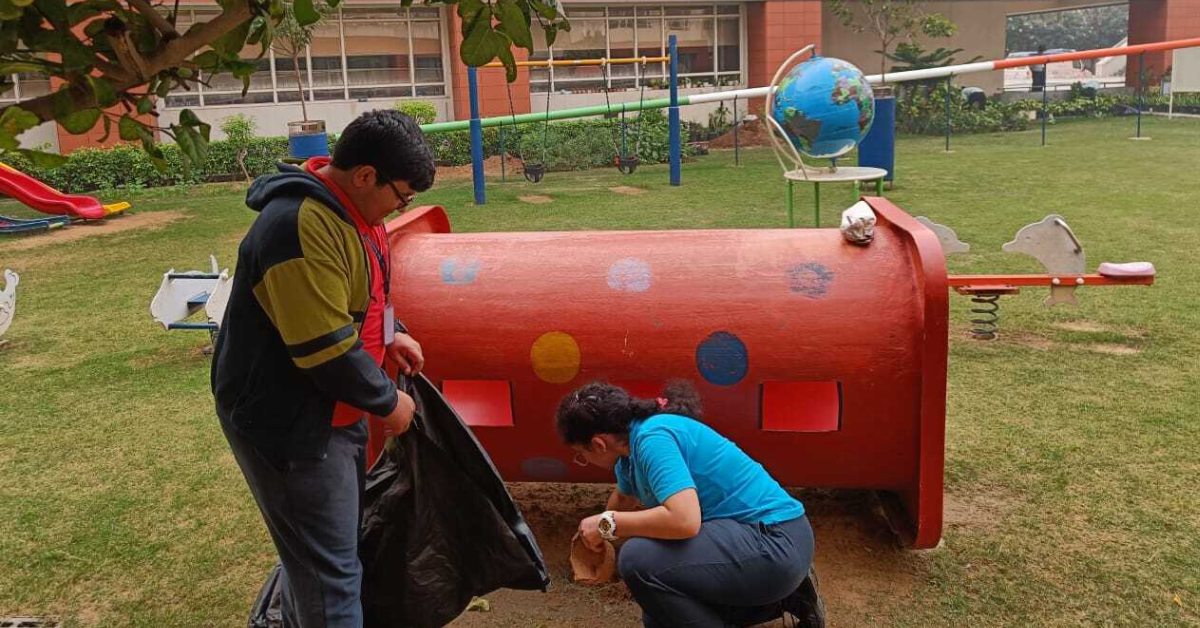
Paired with a custom-built bilingual app called ‘Agroww’, the device provides farmers with immediate recommendations to optimise fertiliser use and improve crop health.
But how did this impressive project come to life?
It began in April 2023, with the team spending long hours brainstorming and conducting field visits to rural areas, such as Manesar, Kadarpur, and Sardhana. During these visits, the students observed a common and worrying pattern. Farmers were applying fertilisers without knowing the precise needs of their soil.
“When we asked farmers why they did not test their soil, many said the labs were too far away and the reports took weeks to come back,” explains Gaurvica, “Crops do not wait for reports. They need nutrients at the right time.”
This disconnect meant many farmers overused fertilisers, which not only depleted the land but also risked harming health and the environment. Navya, reflecting on her own experience with illness, felt this was an issue worth tackling.
“We wanted to build something practical; a device that helps farmers make informed decisions, right there in the field,” Aayush tells The Better India.
The result was Mati Rakshak, a device representing simplicity and robustness.
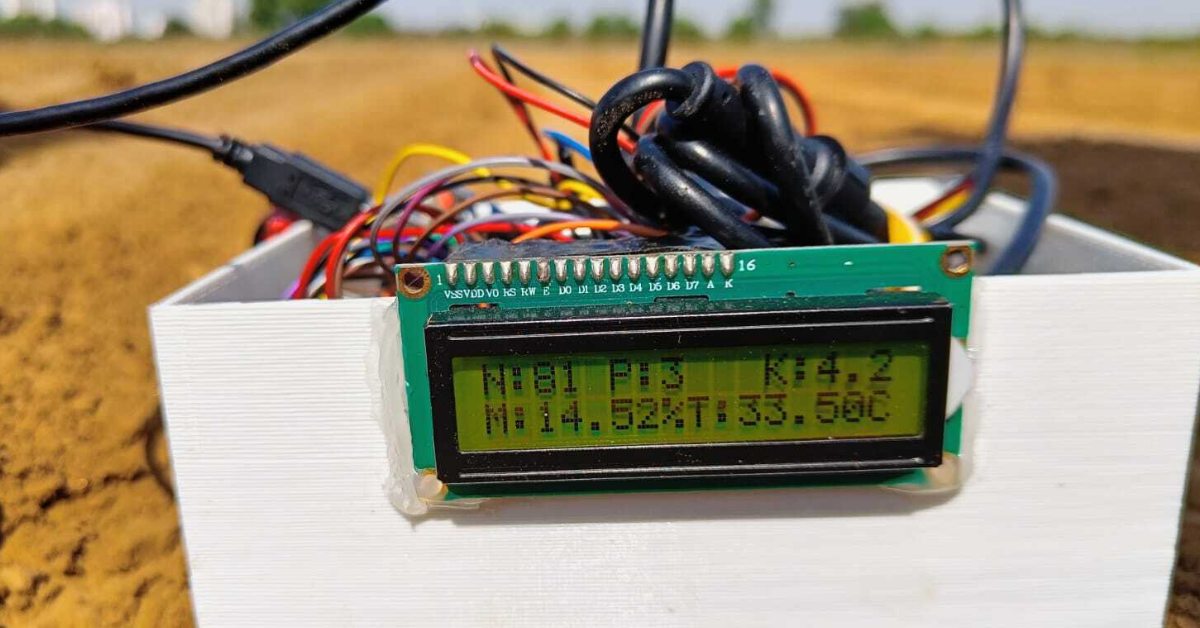
Building tech that speaks the language of the land
At its core, Mati Rakshak uses sensors that measure nitrogen (N), phosphorus (P), and potassium (K), the three essential macronutrients that plants require for healthy growth. A XIAO ESP32S3 microcontroller supports the device to wirelessly transmit this data via Bluetooth and Wi-Fi, allowing for real-time synchronisation with the Agroww app.
Navya, who looks after the hardware development, shares how the design evolved.
“Initially, we experimented with a solar-powered system mounted on a tall pole, which stood about five feet high with solar panels at the top, powering the battery inside an IP-tested box,” she explains. “But farmers expressed concerns about theft and practicality. So we redesigned Mati Rakshak into a handheld and rechargeable device that they could easily carry and use in the field.”
The device features an e-ink display that shows live nutrient readings on the spot. A moisture sensor calibrates the readings based on the water content in the soil, making sure they are not distorted. Simayah explains, “Moisture is tricky at first. Too much water skews the NPK readings, so we had to include a sensor.”
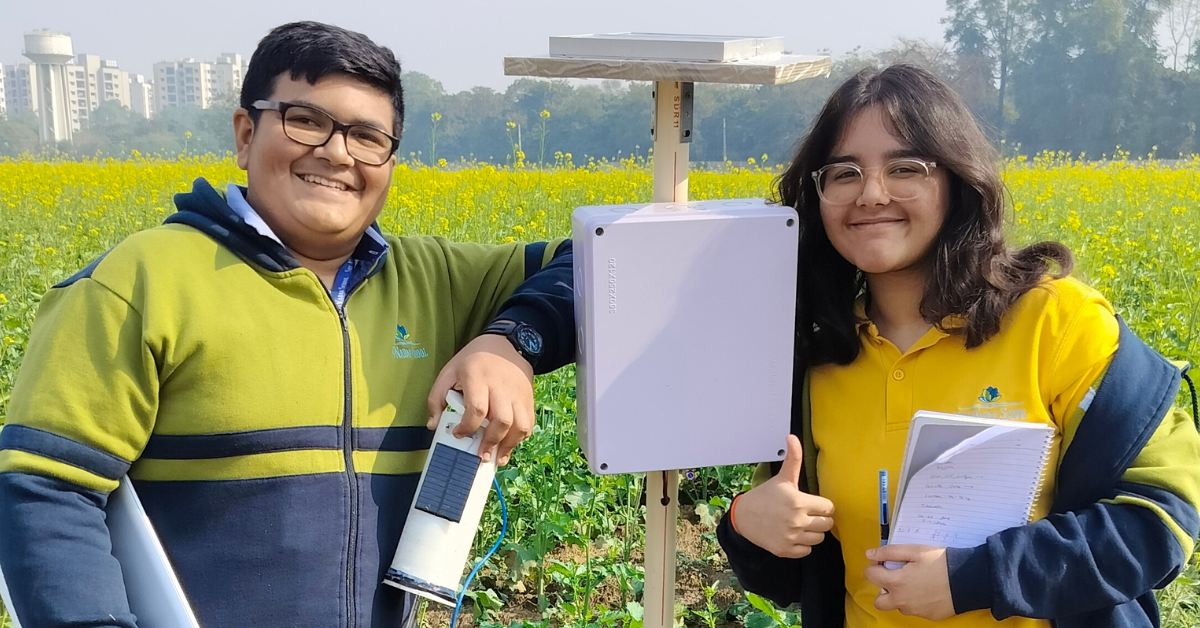
To withstand the often harsh and unpredictable field conditions in Indian agriculture, the team focused on making the device robust. It includes a waterproof casing and a lithium polymer (LiPo) battery that can last through multiple uses, making it both durable and farmer-friendly.
The right fertiliser, at the right time
Equally critical to the project is the Agroww app, designed using FlutterFlow. This app serves as the brain behind the device, offering farmers a streamlined and bilingual interface in both English and Hindi.
“Farmers do not have time to figure out complex apps or scroll through confusing jargon,” says Gaurvica, who designs the app’s interface and backend logic. “It needs to be fast, simple, and informative.”
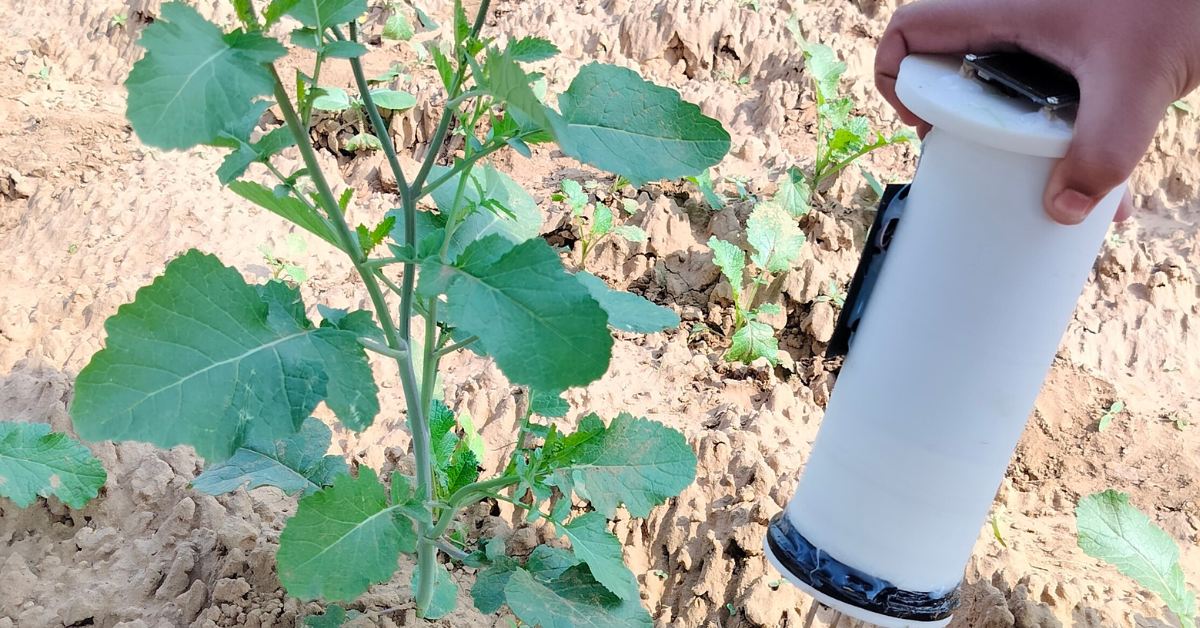
Once the Mati Rakshak probes are inserted into the soil, the Agroww app displays the current NPK levels in a few minutes. The farmer then selects their crop and inputs their field size. Drawing from guidelines issued by the Indian Council of Agricultural Research (ICAR), the app calculates the exact fertiliser quantity, in kilograms per hectare, needed for that specific crop and condition.
Aayush elaborates, “If a farmer is planting mustard in a one-acre plot and the nitrogen level is low, Agroww recommends exactly how many kilos of nitrogen fertiliser they need to apply. This cuts out guesswork and guarantees no overuse.”
But the app is not just a fertiliser calculator. It also includes a powerful image-based diagnostic feature. Using YOLOv8, a cutting-edge learning model, the app helps identify crop diseases and weed infestations. Farmers can upload a photo of the affected area, and the app provides a likely diagnosis and actionable suggestions.
“The AI component is important because we want to help farmers go beyond soil health,” says Gaurvica. “Being able to detect early signs of disease can save entire crops.”
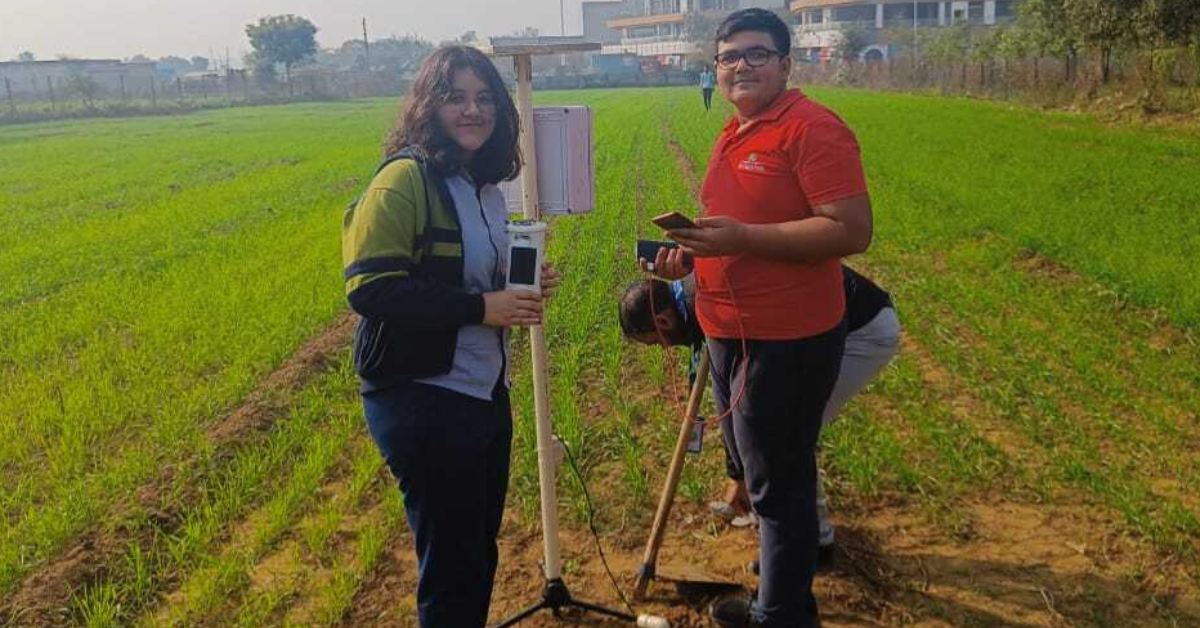
Designed for villages, not just labs
Understanding the issue of limited internet access in rural regions, the team designed the app to function both online and offline. In offline mode, it connects directly to Mati Rakshak via Bluetooth. Once internet access is available, the data is uploaded and synced via Wi-Fi.
Scientific rigour and research play an important role throughout the project. The students based their recommendations on standards from ICAR and the Food and Agriculture Organisation (FAO), and supported their work with findings from peer-reviewed research. Aayush further strengthened the scientific grounding by interning at the Department of Agriculture & Farmers Welfare in Haryana, where he observed real-life soil testing procedures.
To validate their device’s accuracy, the team conducts parallel tests, inserting Mati Rakshak in soil samples and then sending those same samples to ICAR-approved labs for comparison.
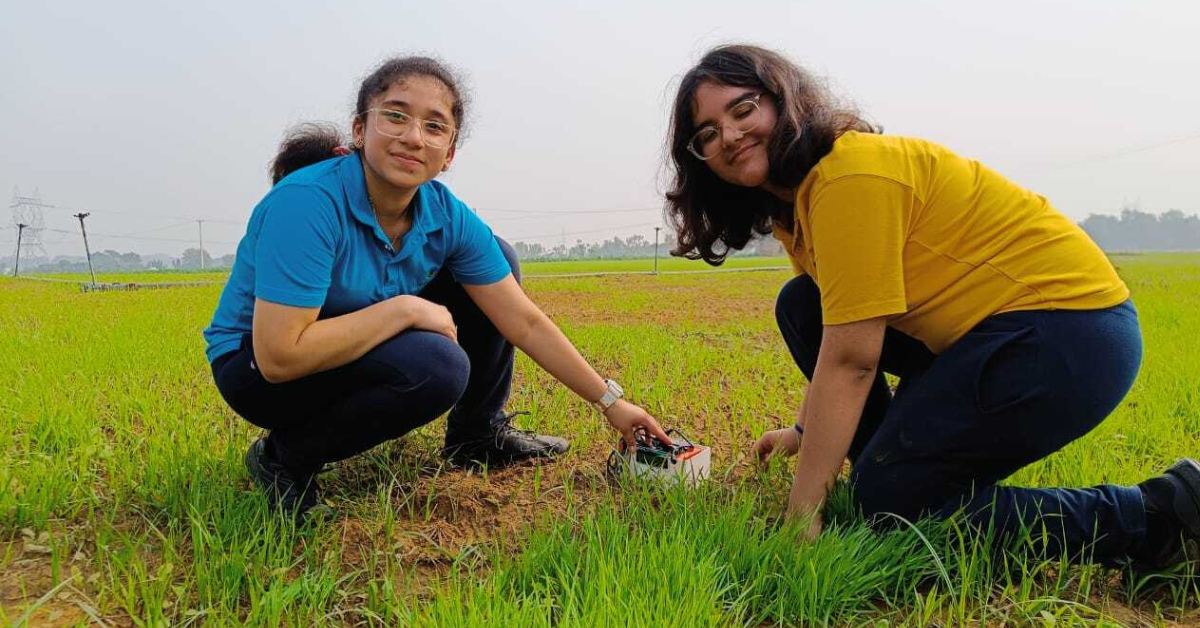
“We do not stop tweaking until our readings consistently match the lab results,” says Navya. “Accuracy is not optional for us; it is non-negotiable.”
Their teacher and mentor, Mr Nimesh, is impressed by the team’s resourcefulness. “They do not have access to a soil lab at school, so they rely on external connections, research, and a lot of determination. They take every challenge as an opportunity,” he says.
As with any innovative project, the early days bring plenty of hurdles. Initial prototypes were bulky, and the high-tech concept drew scepticism from the farmers they aimed to help. The mentor recalls, “We visited rural areas for feedback, and many farmers did not trust a group of school students who showed up with a gadget claiming to analyse their land.”
But one farmer, a known person, agreed to try the device. After seeing accurate and reliable results, he became a strong advocate, spreading the word among his peers and helping the team earn the farmers’ trust.
A gold medal from across the globe
Their hard work and persistence culminated in June 2025, when their project, Agroventure: Soil Analysis & Agrochemical Optimisation IoT Device, earned the CREST Gold Award — one of the United Kingdom’s highest honours in STEM (Science, Technology, Engineering, and Mathematics) education.
“It is unbelievable,” says Navya. “We did not begin this project to win an award. We did it to solve a real-world problem. But receiving recognition like this validates all those late nights and tough decisions.”
The CREST Award recognises not just scientific accuracy and technical merit, but also real-world impact, qualities that the team embodies throughout their project. The award proves to be a moment of affirmation, but not a stopping point.

The team continues to iterate and build. They are currently expanding Agroww’s crop database to include more commonly grown Indian crops like rice, pulses, and vegetables.
They are also integrating weather forecasts to help farmers plan irrigation schedules more effectively; improving the AI disease detection model with larger training datasets; and refining their pricing model to make sure that Mati Rakshak remains accessible and affordable to the farmers who need it most.
“If this helps even a small number of farmers reduce unnecessary fertiliser use or save a crop from disease, then it is worth it,” says Gaurvica. “The environmental benefits are huge, including less runoff, healthier soil, and better yields. Everyone wins.”
“We all bring different things to the table”
The synergy within the team plays a key role in their success. Navya heads the hardware development, Aayush leads research and outreach, Gaurvica handles the app’s design and logic, and Simayah focuses on communication. Each student contributes a distinct strength, making the whole greater than the sum of its parts.
“We all bring different things to the table,” says Simayah. “But what keeps us going is how well we collaborate. It does not feel like schoolwork, it feels like building something that matters.”
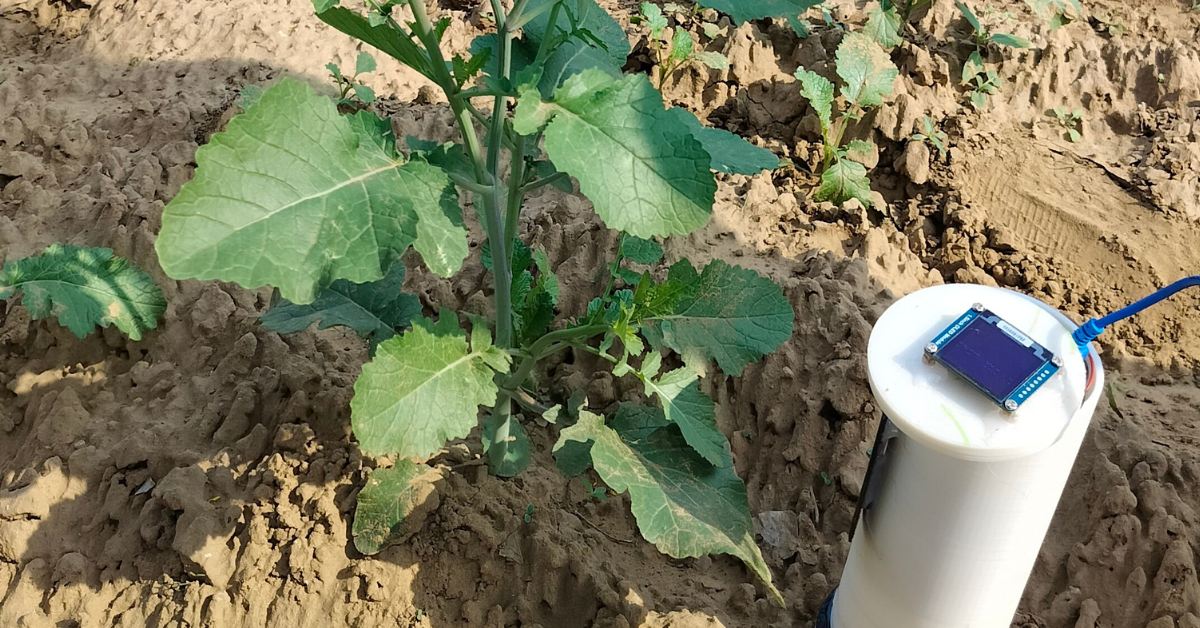
Mr Nimesh adds, “They teach themselves advanced concepts, from embedded systems and sensors to app development and machine learning. My job is simply to guide and support. Their initiative is what makes the difference.”
The journey of Agroventure is far more than a school project. It is a reminder that when students are trusted with real-world problems and given the space to think freely, they are capable of creating impactful solutions with empathy, ingenuity, and rigour.
Navya reflects proudly, “All of this started because I got sick and wanted to understand why. That one moment led to a chain reaction. Now we are helping farmers take better care of their soil, and maybe, we will indirectly help people stay healthy too.”
All pictures courtesy Agroventure
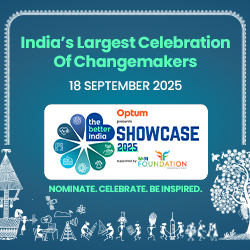
No comments:
Post a Comment